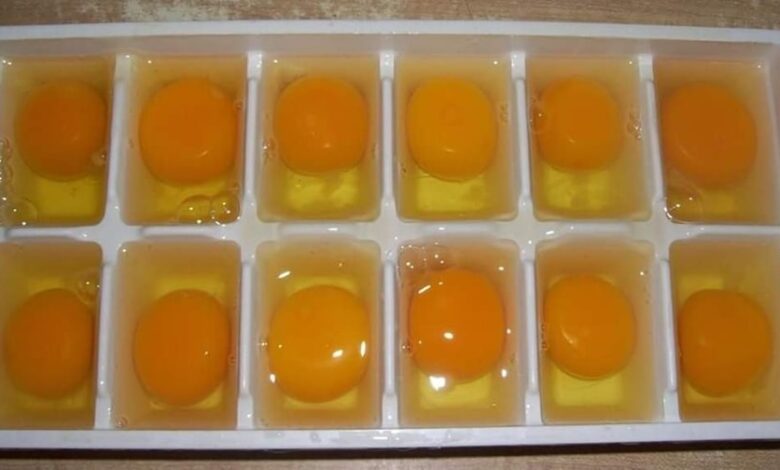Freezing Eggs

When you stumble upon a fantastic sale on eggs, it’s a golden opportunity to stock up. But how can you ensure they don’t go to waste? Freezing eggs is the answer. In this comprehensive guide, we will show you how to freeze eggs effectively, so you can have them ready for your culinary adventures whenever you need them. Let’s dive into the incredible world of freezing eggs.
Freezing Eggs: The Basics
Freezing eggs is a fantastic way to ensure you never run out of this essential ingredient. Here’s a simple method to follow:
Crack and Freeze
- Begin by cracking a single egg into each slot of an ice cube tray.
- Freeze the tray, and once the eggs are solid, pop them out.
- Store the frozen egg cubes in a ziplock bag.
Now, let’s delve deeper into each step.
Step 1: Cracking Eggs
Cracking eggs into an ice cube tray is a straightforward process. It’s essential to use a clean tray and make sure each compartment is free of any residues.
Step 2: Freezing
Place the tray in the freezer, ensuring it sits level. This step is crucial to ensure uniform egg cubes. Freezing typically takes a few hours.
Step 3: Storage
Once the eggs are frozen solid, pop them out of the tray. These egg cubes can be conveniently stored in a ziplock bag. Label the bag with the date for easy tracking.
Using Frozen Eggs
Now that you have your frozen egg cubes, how can you use them effectively in your recipes?
Defrosting
When a recipe calls for eggs, simply take out a cube for each egg required. Place them in a bowl and let them defrost at room temperature. It usually takes around 20-30 minutes.
Storage Duration
Frozen eggs can be stored for up to 3 months without significant quality loss. For longer storage, consider using a vacuum sealer to extend their shelf life for up to 1 year.
Benefits of Freezing Eggs
Freezing eggs comes with several advantages:
- Cost-Efficient: Take advantage of sales and save money by freezing eggs.
- Always Prepared: Have eggs ready for your baking and cooking needs.
- Reduces Food Waste: Prevent eggs from going bad in the refrigerator.




